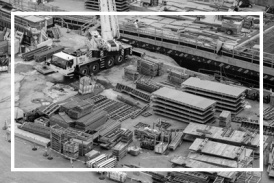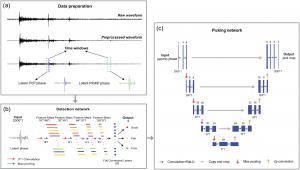Elucidating Earth’s Interior Through Advanced Teleseismic Phase Picking
GA, UNITED STATES, April 21, 2025 /EINPresswire.com/ -- A deep learning-based scheme is proposed for automated and efficient processing of teleseismic phases.
1. The validation with two teleseismic phases, PcP and PKiKP, demonstrate high detection accuracies and low picking errors.
2. Deep-learning picking of first peaks is more accurate than picking first breaks of teleseismic phases.
3. This proposed scheme would enhance mining of teleseismic phases and probing of Earth's interior structures and their dynamics.
How do scientists explore Earth's hidden interior — its crust, mantle, and core? The answer lies in earthquake waves. Like X-rays, these seismic waves travel through and reflect off internal structures, allowing scientists to visualize the planet's interior. By analyzing these waveforms, seismologists can create "B-scans" of structure or "CT scans" of physical properties.
Identifying these reflections in seismic data, however, is complex and time-consuming. Reflected phases can be distorted by structural discontinuities and local heterogeneities, making it easy to mistake noise for real signals. This challenge underscores the need for efficient and accurate automatic phase pickers to handle the vast volume of teleseismic earthquake data, whose phases often reflect off deep structures within the Earth.
A recent study published in KeAi's Artificial Intelligence in Geosciences (KeAi) introduces a new deep learning-based workflow to automatically detect and pick teleseismic phases with high efficiency and accuracy.
"To improve the workflow's performance, we divide it into three parts: phase preparation, detection, and picking," explains leadingco-author Dr. Congcong Yuan, a postdoctoral researcher at Cornell University. "We apply physical constraints during preparation to highlight potential signals. The detection step filters out low-quality data, so that the final picking step can determine arrival times more accurately and without bias."
"This approach allows fast, reliable and robust teleseismic phase processing. "It enables us to extract more meaningful data, helping us better understand the physics and dynamics deep inside the Earth," adds Yuan.
"Yuan and colleagues are collaborating with another research team in teleseismic imaging to apply this method to specific tectonic regions. "The more high-quality phase data we have, the more we can uncover about Earth's inner workings," he says.
"For decades, seismologists have faced the tedious task of processing seismic data," notes co-author Prof. Jie Zhang from the University of Science and Technology of China. "With the rise of deep learning, seismology is reaching a turning point from semi-automatic workflows to truly autonomous systems."
References
DOI
10.1016/j.aiig.2025.100108
Original Source URL
https://doi.org/10.1016/j.aiig.2025.100108
Lucy Wang
BioDesign Research
email us here
Legal Disclaimer:
EIN Presswire provides this news content "as is" without warranty of any kind. We do not accept any responsibility or liability for the accuracy, content, images, videos, licenses, completeness, legality, or reliability of the information contained in this article. If you have any complaints or copyright issues related to this article, kindly contact the author above.
Length of Hospitalization for Stage III and IV Decubitus Ulcers Before and After 2015
The Blair Memory Care Opens in Cary, NC to Strong Community Support
Premier Auto Protect Earns 2025 Buyer’s Choice Award from ConsumerAffairs, Based on Verified Customer Reviews
Kalendarium
Więcej ważnych informacji
 Jedynka Newserii
Jedynka Newserii

 Jedynka Newserii
Jedynka Newserii

Transport

Import materiałów budowlanych z Rosji zagrożeniem dla konkurencyjności europejskiego rynku. Konieczne są zmiany i egzekwowanie sankcji
Unia Europejska powinna zrewidować politykę celną na import materiałów budowlanych spoza państw członkowskich, w tym państw wschodnich – twierdzą uczestnicy konferencji „Bezpieczeństwo gospodarcze UE”. Obecnie Wspólnota nakłada na europejskich producentów coraz więcej ograniczeń, nie rewidując polityki celnej, co przekłada się na systematyczne osłabienie konkurencyjności przedsiębiorstw, spadek produkcji i zagrożenie dla miejsc pracy.
Konsument
Polacy odczuwają brak wiedzy na temat inwestowania. Może to sprzyjać podejmowaniu nieracjonalnych decyzji finansowych

Co trzeci Polak odczuwa brak wiedzy w obszarze inwestowania, a tylko co piąty chciałby pogłębić swoją wiedzę na ten temat – wynika z badania „Poziom wiedzy finansowej Polaków 2025”. Ci, którzy na własną rękę szukają informacji i porad, coraz częściej sięgają do blogów, portali, podcastów i wideo w internecie. Eksperci przestrzegają, że finansowych i inwestycyjnych porad udzielają nie tylko specjaliści w danej dziedzinie, więc potrzebna jest zasada ograniczonego zaufania.
Handel
Do 2030 roku liczba plastikowych opakowań w e-handlu modowym może się podwoić. Ich udział najszybciej rośnie w Polsce

Wraz ze wzrostem kanału e-commerce w branży modowej rośnie liczba wykorzystywanych opakowań, z których znaczną część wciąż stanowią te z plastiku. Do 2030 roku w Polsce e-sprzedawcy zużyją 147 mln plastikowych opakowań – wynika z badania przeprowadzonego na zlecenie DS Smith. Można zauważyć rosnący trend wśród marek modowych, które coraz częściej wybierają opakowania wykonane z papieru lub materiałów z recyklingu. To o tyle istotne, że polscy konsumenci odczuwają wyrzuty sumienia z powodu ilości plastiku, w którym dostarczane są ich zamówienia.
Partner serwisu
Szkolenia

Akademia Newserii
Akademia Newserii to projekt, w ramach którego najlepsi polscy dziennikarze biznesowi, giełdowi oraz lifestylowi, a także szkoleniowcy z wieloletnim doświadczeniem dzielą się swoją wiedzą nt. pracy z mediami.









.gif)

 |
| |
| |
|